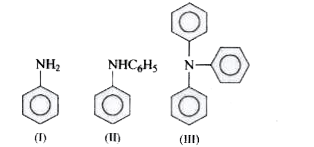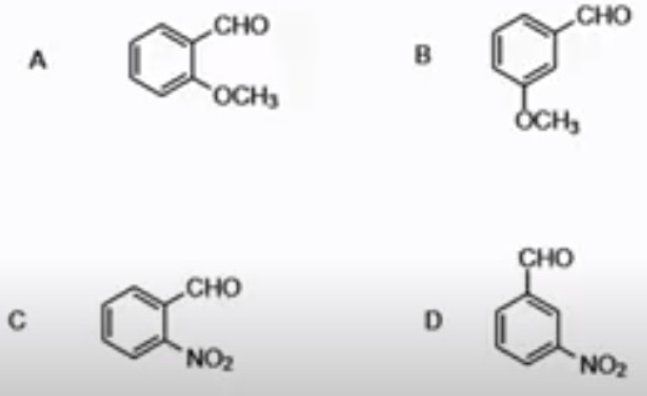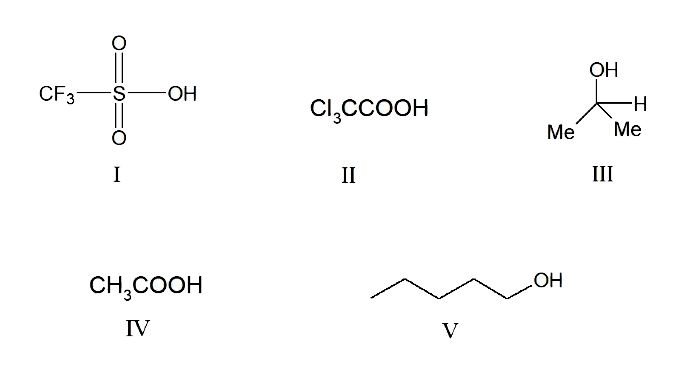Arrange the following in increasing orde of base strength : methylamine, dimethylamine , aniline , N-methylamiline .
To arrange the compounds methylamine, dimethylamine, aniline, and N-methyl aniline in increasing order of base strength, we can follow these steps:
Step 1: Identify the Types of Amines
- Methylamine (CH₃NH₂) and Dimethylamine (CH₃)₂NH are aliphatic amines.
- Aniline (C₆H₅NH₂) is an aromatic amine.
- N-Methyl aniline (C₆H₅N(CH₃)H) has both an aromatic and an aliphatic component.
Step 2: Understand Basicity in Amines
- Aliphatic amines are generally stronger bases than aromatic amines due to the availability of the lone pair of electrons on nitrogen.
- In aromatic amines, the lone pair of electrons on nitrogen can participate in resonance with the aromatic ring, making them less available for protonation.
Step 3: Analyze Each Compound
1. Aniline: The lone pair on nitrogen is delocalized into the aromatic ring, making it the least basic.
2. N-Methyl aniline: The presence of the methyl group provides some +I (inductive) effect, which increases the basicity compared to aniline but is still less than aliphatic amines.
3. Methylamine: The presence of one methyl group provides a +I effect, making it more basic than aniline and N-methyl aniline.
4. Dimethylamine: With two methyl groups, it has the strongest +I effect, making it the most basic among the four.
Step 4: Arrange in Increasing Order of Basic Strength
Based on the analysis:
- Aniline (weakest base)
- N-Methyl aniline
- Methylamine
- Dimethylamine (strongest base)
Thus, the increasing order of base strength is:
Aniline < N-Methyl aniline < Methylamine < Dimethylamine
- Methylamine (CH₃NH₂) and Dimethylamine (CH₃)₂NH are aliphatic amines.
- Aniline (C₆H₅NH₂) is an aromatic amine.
- N-Methyl aniline (C₆H₅N(CH₃)H) has both an aromatic and an aliphatic component.
- Aliphatic amines are generally stronger bases than aromatic amines due to the availability of the lone pair of electrons on nitrogen.
- In aromatic amines, the lone pair of electrons on nitrogen can participate in resonance with the aromatic ring, making them less available for protonation.
1. Aniline: The lone pair on nitrogen is delocalized into the aromatic ring, making it the least basic.
2. N-Methyl aniline: The presence of the methyl group provides some +I (inductive) effect, which increases the basicity compared to aniline but is still less than aliphatic amines.
3. Methylamine: The presence of one methyl group provides a +I effect, making it more basic than aniline and N-methyl aniline.
4. Dimethylamine: With two methyl groups, it has the strongest +I effect, making it the most basic among the four.
Based on the analysis:
- Aniline (weakest base)
- N-Methyl aniline
- Methylamine
- Dimethylamine (strongest base)
Aniline < N-Methyl aniline < Methylamine < Dimethylamine
Topper's Solved these Questions
- ORGANIC COMPOUNDS WITH FUNCTIONAL GROUPBOOK - CENGAGE CHEMISTRY ENGLISHCHAPTER - ORGANIC COMPOUNDS WITH FUNCTIONAL GROUPEXERCISE - Archives Fill In The Blanks
3 Videos
- NUCLEAR CHEMISTRYBOOK - CENGAGE CHEMISTRY ENGLISHCHAPTER - NUCLEAR CHEMISTRYEXERCISE - Archives Subjective
13 Videos
- P-BLOCK GROUP 15 ELEMENTS - THE NITROGEN FAMILYBOOK - CENGAGE CHEMISTRY ENGLISHCHAPTER - P-BLOCK GROUP 15 ELEMENTS - THE NITROGEN FAMILYEXERCISE - Exercises Archives (Subjective)
28 Videos
Similar Questions
Knowledge Check
Arrange the following in increasing order of basicity.
 AI<II<IIIBIII<I<IICIII<II<IDII<III<I
AI<II<IIIBIII<I<IICIII<II<IDII<III<IArrange the following in increasing order of basicity :
 AS<Q<R<PBS<Q<P<RCS<R<P<QDP<Q<R<S
AS<Q<R<PBS<Q<P<RCS<R<P<QDP<Q<R<SArrange the following in increasing order of stability.
 AI<II<IIIBII<I<IIICI<III<IIDII<III<I
AI<II<IIIBII<I<IIICI<III<IIDII<III<I
Arrange the following in decreasing order of their basic strength: ammonia, triethylamine, aniline, ethylamine and diethylamine.
View SolutionArrange the following in incrasing order of electrophilic strength:
_E01_271_Q01.png)
View SolutionArrange the following in increasing order of reaction with HCN

View SolutionArrange the following in increasing order of basic strength:
Aniline,p-Nitroaniline and p-toluidine
View SolutionArrange the haloacids in the increasing order of acid strength.
View Solution

